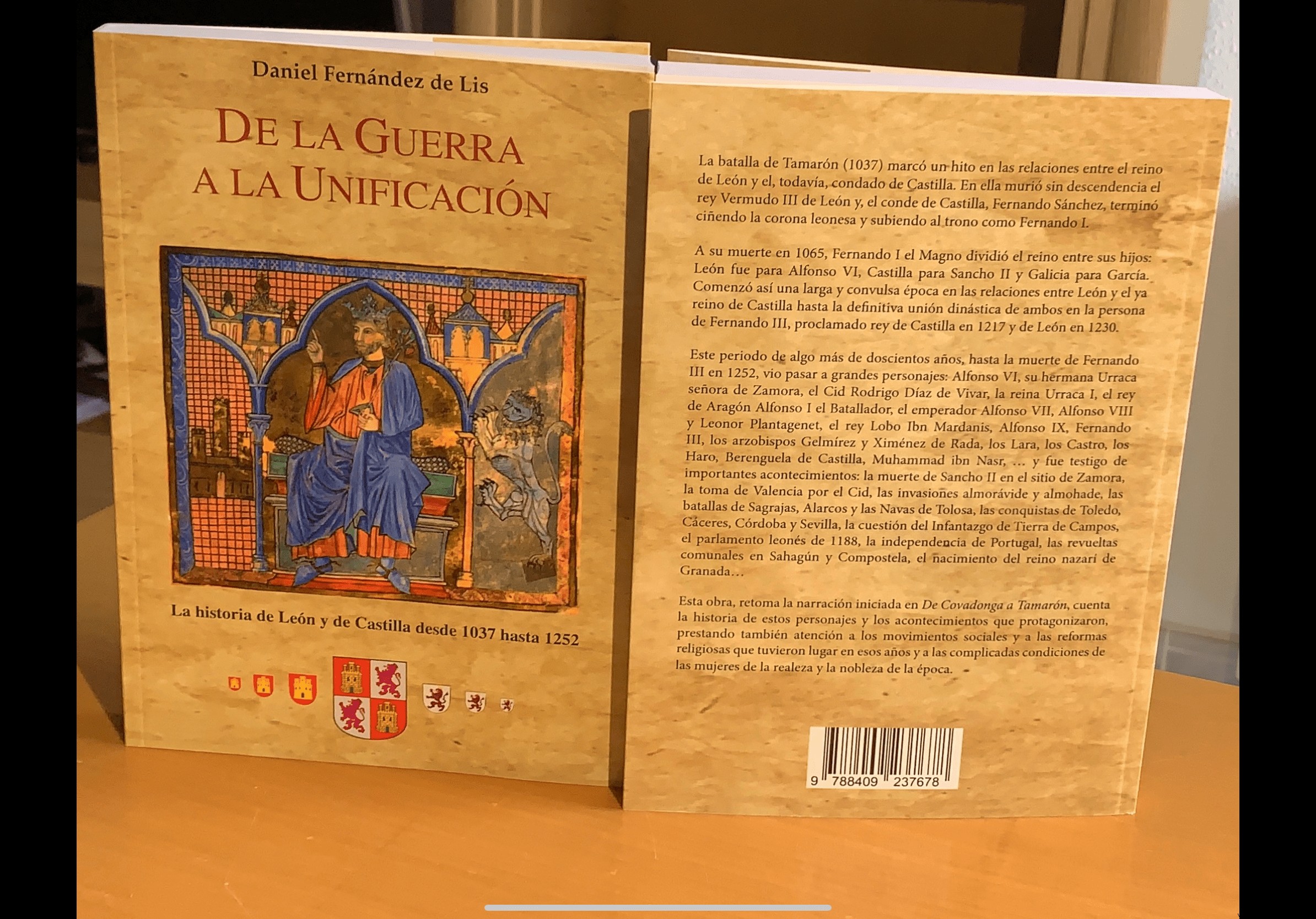Next December 29 at 7:00 p.m., at the Tercios Viejos bookstore (Calle María Panés nº4 in Madrid), I will be presenting and signing copies of the book “From war to unification. History of León and Castile from 1037 to 1252».

Synopsis
The battle of Tamarón (1037) marked a milestone in relations between the kingdom of León and the still-county of Castile. In it, King Vermudo III of León died without issue and the Count of Castile, Fernando Sánchez, ended up encircling the Leonese crown and rising to the throne as Fernando I. Upon his death in 1065, Fernando I the Great divided his kingdom among his sons:León went to Alfonso VI, Castile to Sancho II and Galicia to García. Thus began a long and convulsive period in relations between León and the already kingdom of Castile until the definitive dynastic union of both in the person of Fernando III, proclaimed king of Castile in 1217 and of León in 1230. This period of just over Two hundred years until the death of Ferdinand III in 1252 saw the passing of great personalities (Alfonso VI, his sister Urraca, Lady of Zamora, El Cid Rodrigo Díaz de Vivar, Queen Urraca I, King of Aragon Alfonso I the Battler, Emperor Alfonso VII, Alfonso VIII and Leonor Plantagenet, King Lobo Ibn Mardanis, Alfonso IX, Fernando III, Archbishops Gelmírez and Ximénez de Rada, the Lara, the Castro, the Haro, Berenguela de Castilla, Muhammad ibn Nasr,…) and was a witness of important events (the death of Sancho II in the siege of Zamora, the taking of Valencia by El Cid, the Almoravid and Almohad invasions, the battles of Sagrajas, Alarcos and Las Navas de Tolosa, the conquests of Toledo, Cáceres, Córdoba and Seville, the question of l Infantazgo of Tierra de Campos, the Leonese parliament of 1188, the independence of Portugal, the communal revolts in Sahagún and Compostela, the birth of the Nasrid kingdom of Granada...). This work, taking up the narration begun in De Covadonga a Tamarón, tells the story of these characters and the events they were involved in, also paying attention to the social movements and religious reforms that took place in those years and the complicated conditions of the women of royalty and nobility of the time.
